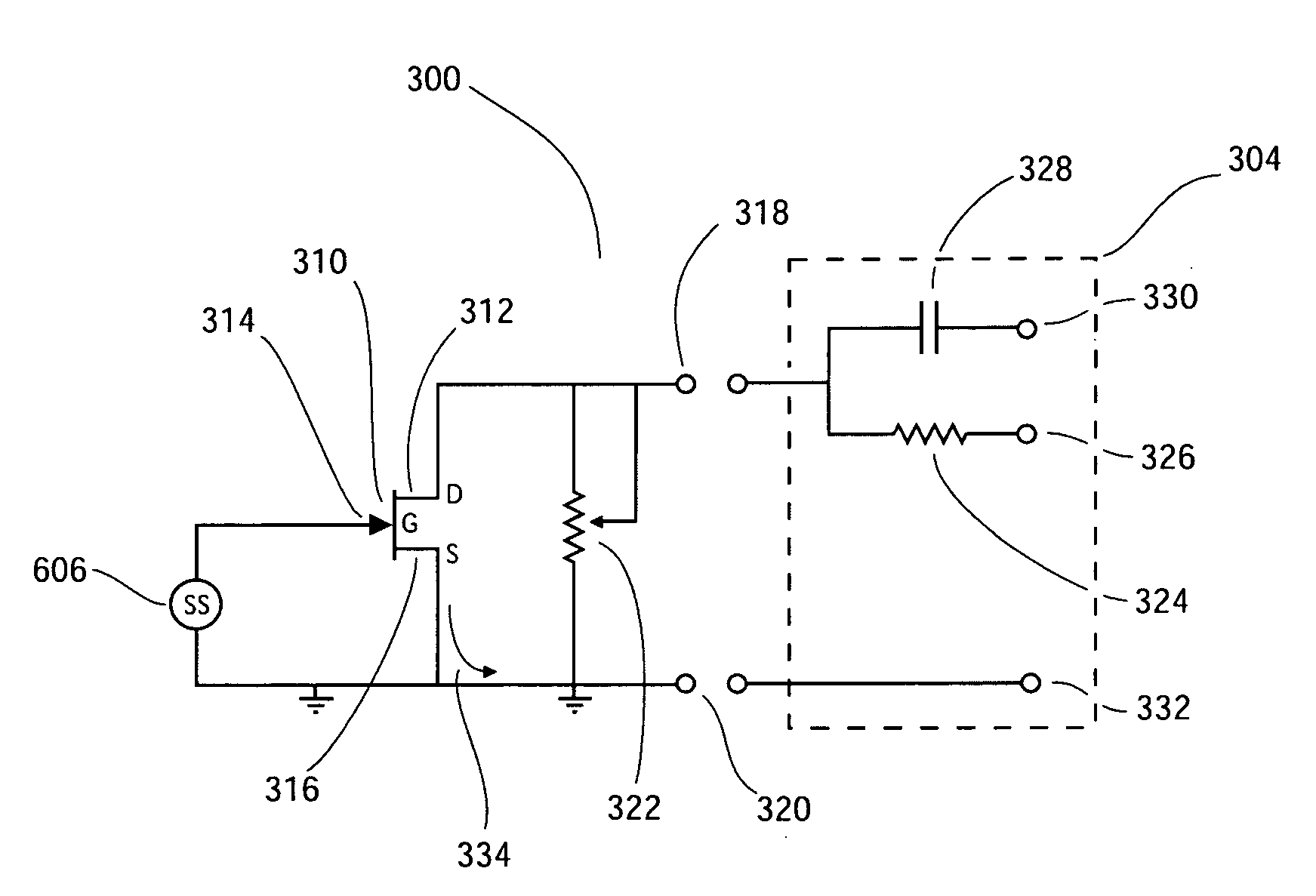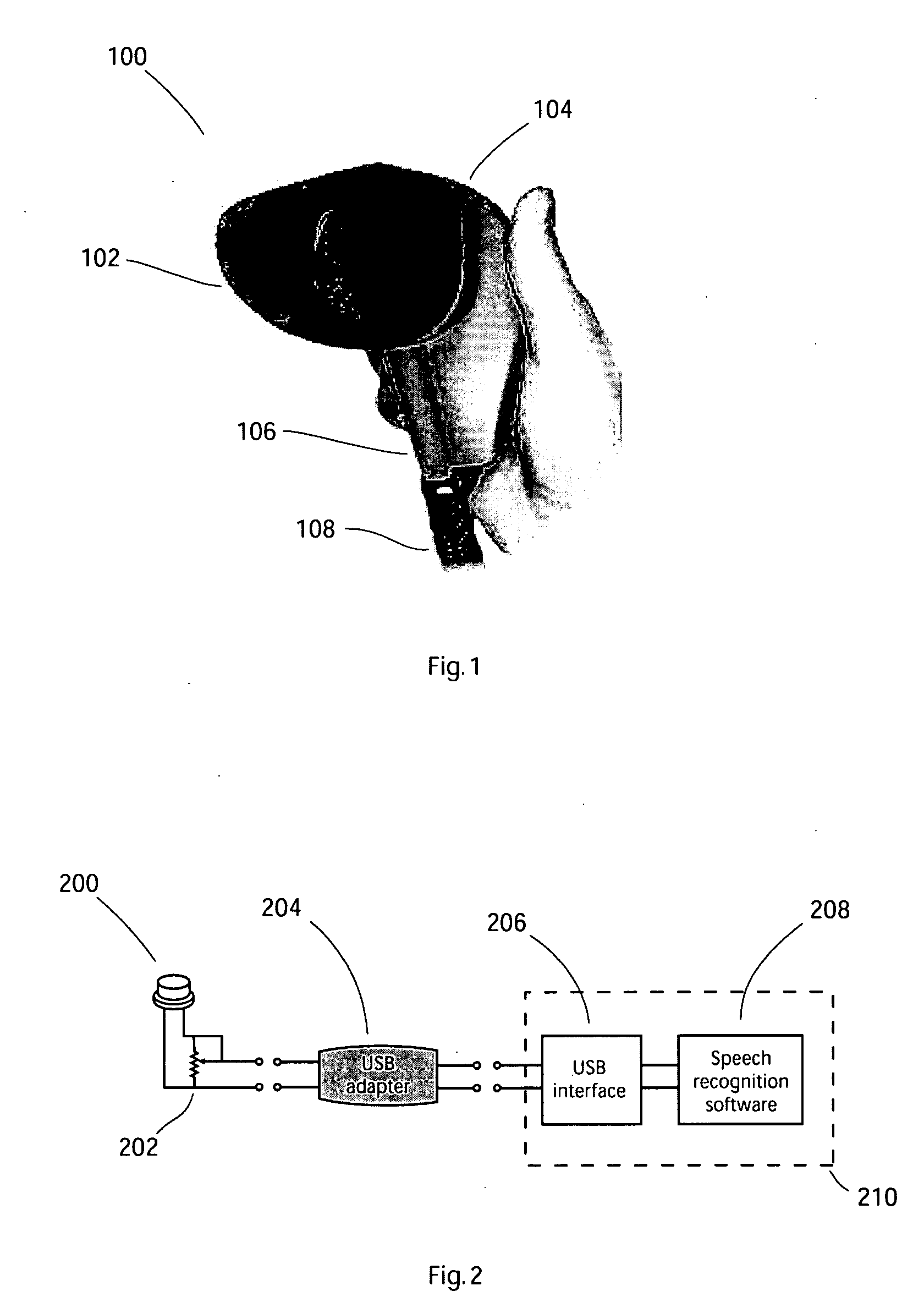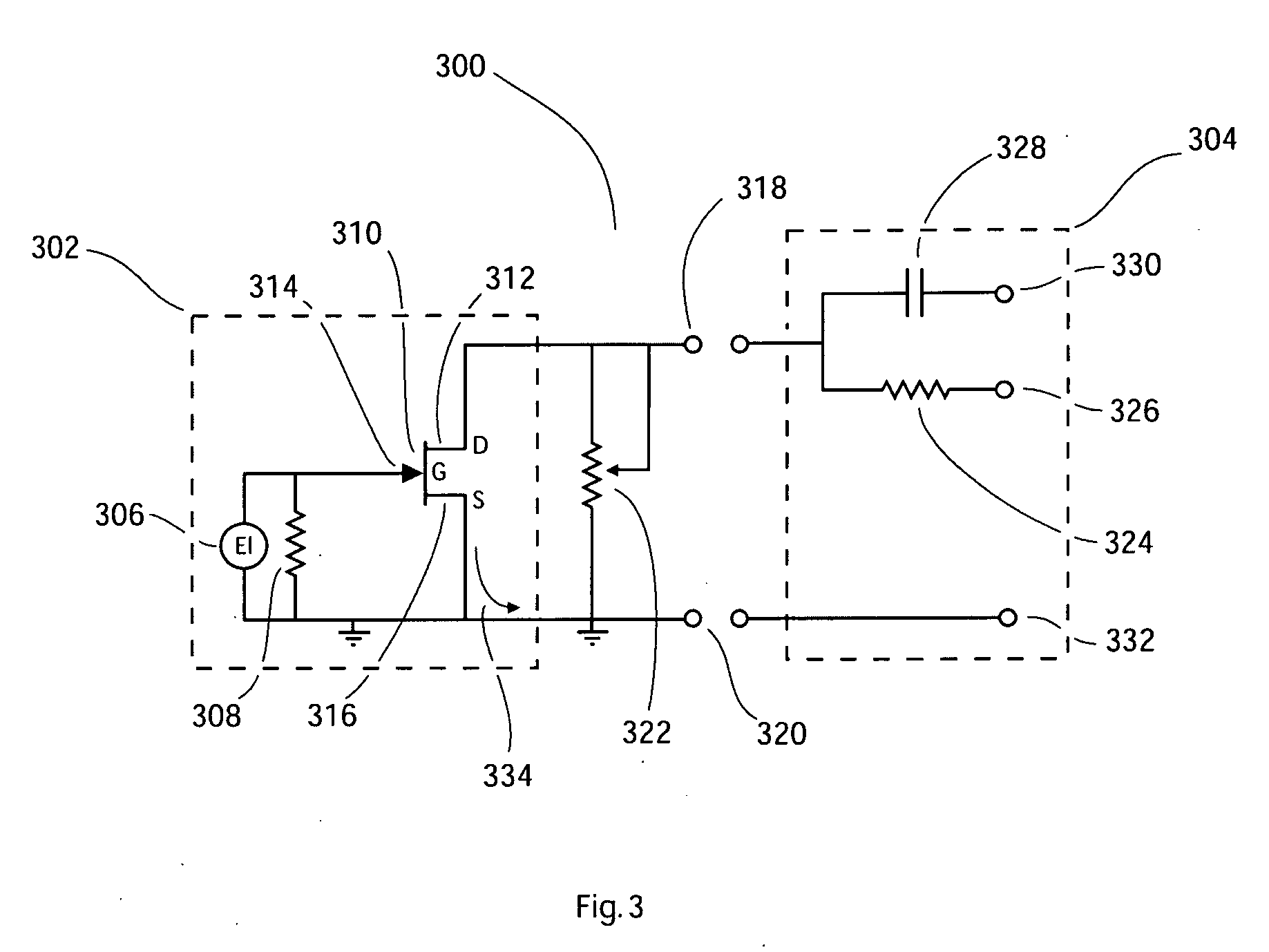Microphone Circuit
a microphone and circuit technology, applied in the direction of transducer circuits, transducer casings/cabinets/supports, electrostatic transducers, etc., can solve the problems of signal to be amplified, signal is usually small (a few millivolts), signal to be overcome, etc., to reduce the drain to source
- Summary
- Abstract
- Description
- Claims
- Application Information
AI Technical Summary
Benefits of technology
Problems solved by technology
Method used
Image
Examples
Embodiment Construction
[0031]FIG. 1 is an image showing a general perspective view of a typical mask 100 used for recording speech without disturbing the surrounding environment. 102 shows a mouthpiece covering just the mouth. The mouthpiece 102 is made of a soft elastic rubber-like material to provide comfort and a good acoustic seal around the mouth of the speaker. A hard shell 104 forms the body of the mask and is partially filled with insulating foam. 106 shows a ventilation tube to provide an airflow to assist with speech and the partial removal of moisture. An electrical cable 108 is connected to a microphone (not shown) which is installed within the enclosed space of the mask 100.
[0032]FIG. 2 shows the electrical connections of the components of the preferred embodiment. A two-terminal electret microphone 200 is shown with a potentiometer 202 connected in parallel between the externally accessible drain and source terminals of the FET (not shown) located within the microphone. The electret micropho...
PUM
 Login to View More
Login to View More Abstract
Description
Claims
Application Information
 Login to View More
Login to View More - R&D
- Intellectual Property
- Life Sciences
- Materials
- Tech Scout
- Unparalleled Data Quality
- Higher Quality Content
- 60% Fewer Hallucinations
Browse by: Latest US Patents, China's latest patents, Technical Efficacy Thesaurus, Application Domain, Technology Topic, Popular Technical Reports.
© 2025 PatSnap. All rights reserved.Legal|Privacy policy|Modern Slavery Act Transparency Statement|Sitemap|About US| Contact US: help@patsnap.com



